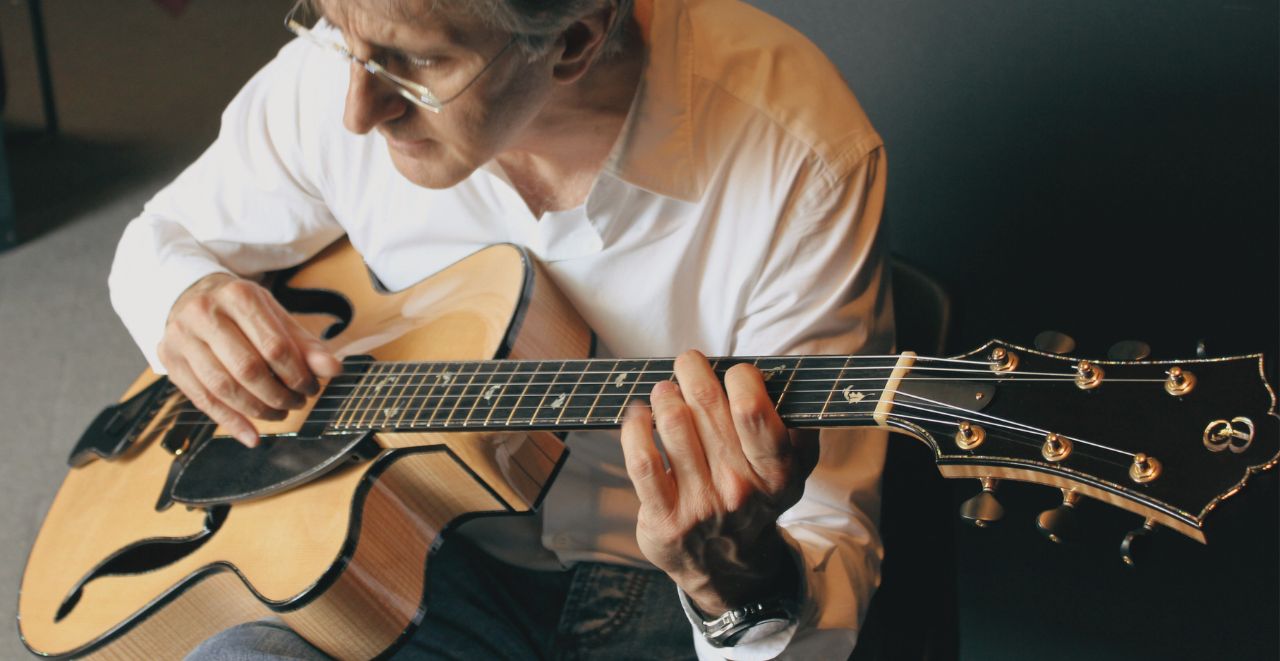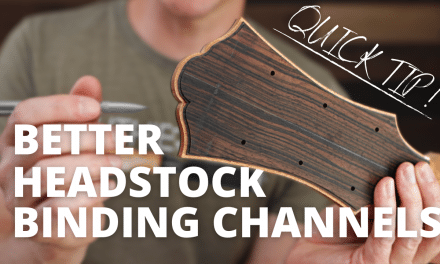
I just received a letter from one of my mentors that gave me a much-needed reminder that I think we need to hear from time to time to keep us on track in our lutherie work.
My good friend and incredibly talented luthier, Gila Eban, wrote to me about something we’ve been discussing—the constant pressure modern luthiers feel to become marketers instead of makers. To chase likes instead of tone. To focus on what photographs well instead of what plays well.
In her letter, she cut right to the heart of it all.
She shared what she believes are three of the most important marketing aspects of any guitar:
- Playability
- Playability
- Playability
And she’s absolutely right!
Let me explain…
Table Of Contents
The Invisible Foundation: Guitar Playability
No matter how beautiful your woods are, how fancy your inlays, how exotic your binding, how perfect your finish—if it doesn’t feel great and play great in the player’s hands, none of that matters.
I see it all the time online. Luthiers competing on the fanciest details—the rosettes, the arm bevels, the complex inlay work.
And don’t get me wrong, I love those details too. I’m an artist at heart, and I’ve spent countless hours on artistic elements of my own guitars.
But here’s what I learned very early on in my career:
Players and collectors aren’t fooled by looks alone.
When a player picks up a guitar, the very first thing they notice—before they can even begin to appreciate the sound, before they can appreciate the beauty of the wood—is how it feels in their hands.
- Is the action effortless?
- Does it inspire them to play?
- Does the neck fit comfortably?
- Are the frets smooth and perfectly crowned?
I don’t think it’s a conscious checklist, but more of an intuitive feeling that emerges based on that first interaction.
And if those fundamental elements aren’t there, everything else becomes irrelevant.
The player never gets past that first hurdle to discover the voice you spent months refining. They never fall in love with the story you told through your wood choices and design.
It’s About Sequence
Think of it like building a house. You can have the most beautiful chandelier in the world, but if the foundation is cracked, nobody’s going to live there to enjoy it.
In guitar building, playability is that foundation.
It’s:
- The fretwork that lets notes ring true all the way up the neck
- The neck carving that fits the player’s hand like it was made for them (because it was)
- The effortless action that responds to the lightest touch
- The neck angle and saddle height that creates perfect string response
When these elements are dialed in, something magical happens:
The player forgets about the technical side and gets lost in the music.
And that’s when they can finally begin to appreciate everything else you’ve created—the tone, the responsiveness, the artistry, the story.
The Rite of Passage
I think it’s almost a rite of passage that we can choose to demand of ourselves:
Master the playability first.
Master your understanding and control over the fretwork, the neck geometry, the setup. Make guitars that players love to play before you reward yourself with the artistic freedom to add all those beautiful details.
Now, I want to be clear—I’m not saying you shouldn’t be artistic.
I’m absolutely passionate about making guitars that tell a story, that express emotion through their design. I’ve written about this many times, and we even have courses in the Luthier’s EDGE dedicated to artistic elements like inlay, headstock binding, and more.
But it’s about sequence. It’s about balance.
- First, make it play like a dream.
- Then, make it sing with your voice.
- Finally, let it shine with your artistic expression.
When these three elements are in harmony—when the playability, the tone, and the artistry all come together—that’s when something truly magical happens.
Your guitar takes on a life of its own. It becomes more than wood and metal. It becomes an instrument that can inspire and touch lives.
The Beautiful Balance
Here’s another thing that Gila’s letter helped me remember:
The guitar is both our canvas AND the musician’s tool.
Yes, we get to tell our story through it. We get to express our artistry, our passion, our vision.
But it’s also—first and foremost—an instrument that needs to serve the musician who plays it. It needs to feel so good in their hands that they can forget about the playing and get lost in creating their own art.
When we keep our priorities in this order, something beautiful unfolds. The player picks up your guitar and immediately relaxes because it feels perfect. Now they’re calm enough to actually hear the voice you’ve built into it. And then they start noticing the artistry—the wood choices, the way light plays across the grain, the story you’re telling.
Each layer builds on the one before it. The experience keeps getting richer.
That’s the harmony we’re looking for—the balance between playability, tone, and artistry.
Between craft and art. Between our vision and the player’s needs.
Your Path Forward
So here’s my challenge to you this week:
Look at your current build (or your next one) and ask yourself honestly:
- Am I prioritizing correctly?
- Are you spending more time on fancy details than on perfecting the fundamentals?
- Are you getting lost in exotic wood choices while the fretwork still needs work?
- Are you designing complex inlays while the neck geometry needs attention
There’s no shame in taking a step back. There’s only wisdom.
Master those fundamentals. Demand that excellence from yourself.
Create guitars that play so well that musicians forget they’re holding an instrument—they’re just making music.
Then reward yourself with the artistic expression. Tell your story. Make it beautiful.
When you honor both the craft and the art—when you give each its proper place in the sequence—your guitars will have that special quality that makes them truly unforgettable.
Sapere Aude. Creare Aude.
P.S. This is exactly why I created the Luthier’s EDGE—to help luthiers master these fundamentals without years of trial and error. We have comprehensive courses on Fretwork (Part 1 and Part 2), Neck Carving, Elevated Fingerboards, and the Art of Guitar Design. And my new course, Atomic Lutherie (Coming Very Soon), goes even deeper into how all these elements work as a complete system. If you’re ready to build guitars that play as beautifully as they look, learn more here →





